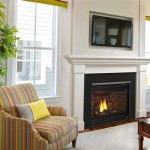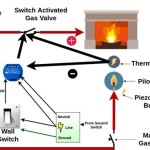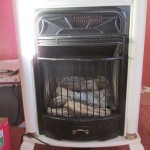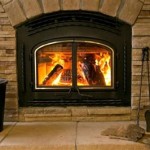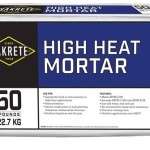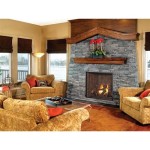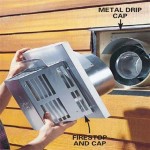Modern Ventless Fireplaces: Aesthetics and Functionality Redefined
Modern ventless fireplaces represent a significant evolution in home heating and ambiance. Unlike traditional wood-burning fireplaces, these contemporary appliances do not require a chimney or flue for venting exhaust. This feature allows for greater installation flexibility, making them suitable for a wider range of homes and architectural designs. The functionality and design of ventless fireplaces have made them increasingly popular among homeowners seeking a cost-effective and aesthetically pleasing heating solution.
The defining characteristic of a ventless fireplace is its method of combustion and emissions management. These fireplaces are designed to burn fuel, typically natural gas or propane, almost completely. This near-total combustion results in very low levels of harmful emissions, allowing the fireplace to operate safely without external venting. While carbon dioxide and water vapor are produced, they are released directly into the room air, similar to the normal respiration of occupants. Regulations and rigorous testing standards ensure that ventless fireplaces meet stringent safety requirements.
Modern ventless fireplaces offer a diverse range of design options, from traditional hearth styles to sleek, contemporary wall-mounted units. This design flexibility allows integrating fireplaces into diverse interior aesthetics. They are available in various sizes and BTU (British Thermal Unit) outputs, enabling selection based on the space needing to be heated and the desired level of ambiance. The flame appearance can also be customized, with options ranging from realistic log sets to modern glass media.
Installation and Location Considerations
Ventless fireplaces offer significant advantages in installation flexibility compared to their vented counterparts. Because no chimney or flue is required, they can be installed in locations where traditional fireplaces would be impractical or impossible. This includes apartments, condominiums, and homes without existing chimney structures. They can be placed against interior walls, in corners, or even hung on the wall, providing a range of design possibilities.
Despite the installation flexibility, careful consideration must still be given to the location and surrounding environment. Ventless fireplaces require a certain amount of room air volume to operate safely. Manufacturers provide guidelines regarding the minimum room size necessary for each models. This is to ensure adequate oxygen for combustion and prevent the buildup of carbon dioxide. Proper placement also involves considering proximity to combustible materials such as curtains, furniture, and wall coverings. Adhering to manufacturer-specified clearances ensures safe operation and prevents fire hazards.
Local building codes and regulations must be consulted before installing a ventless fireplace. Some jurisdictions have specific requirements regarding the installation, fuel type, and safety features of these appliances. Compliance with these codes is essential to ensure the fireplace meets all necessary safety standards and is legally permissible for use. In areas prone to earthquakes, seismic restraints may be needed to hold the appliance in place.
The installation process itself is generally simpler than that of a traditional fireplace. However, employing a qualified professional for gas line connections and electrical wiring is highly recommended. This ensures that the fireplace is properly connected to the fuel source and electrical supply, and that all safety checks are performed. Professional installation minimizes the risk of gas leaks, electrical hazards, and improper operation.
Safety Features and Operation
Safety is paramount in the design and operation of ventless fireplaces. These appliances incorporate several safety features to prevent hazards and ensure safe use. An Oxygen Depletion Sensor (ODS) is a standard component that monitors the oxygen level in the room. If the oxygen level drops below a certain threshold, the ODS automatically shuts off the gas supply to the fireplace, preventing further combustion and the potential buildup of carbon monoxide.
Another crucial safety feature is a flame failure device. This device detects the presence of a flame and automatically shuts off the gas supply if the flame is extinguished. This prevents the release of unburned gas into the room, which could pose a risk of explosion or asphyxiation. Some models also incorporate overheat protection devices that shut off the fireplace if it becomes excessively hot, preventing damage to the appliance and surrounding structures.
Proper operation of a ventless fireplace requires adherence to the manufacturer's instructions and recommended safety practices. Before using the fireplace for the first time, the instructions must be carefully reviewed and understood. It is essential to ensure that the room is adequately ventilated during operation. While ventless fireplaces are designed to burn cleanly, some airflow helps to prevent the buildup of fumes.
Regular maintenance is crucial for ensuring the safe and efficient operation of a ventless fireplace. This includes cleaning the burner assembly, checking the gas connections for leaks, and inspecting the ODS and other safety devices. A qualified technician should perform annual inspections and maintenance to identify and address any potential problems. Proper maintenance extends the lifespan of the fireplace and ensures continued safe operation.
Carbon monoxide detectors are highly recommended in homes with ventless fireplaces. These detectors provide an additional layer of safety by alerting occupants to the presence of carbon monoxide, even at low levels. Carbon monoxide is a colorless, odorless gas that can be fatal if inhaled. Placing carbon monoxide detectors near the fireplace and in sleeping areas can provide early warning and allow occupants to evacuate the premises if necessary.
Fuel Efficiency and Heating Performance
Ventless fireplaces are known for their high fuel efficiency. Because the heat generated by combustion is released directly into the room, very little energy is lost through venting. This can result in significant cost savings compared to traditional fireplaces, which often lose a substantial portion of their heat up the chimney.
The heating performance of a ventless fireplace depends on its BTU output and the size of the room being heated. Models with higher BTU ratings can heat larger spaces more effectively. However, it's important to choose a fireplace with the appropriate BTU output for the room. A fireplace that is too powerful can overheat the space, while one that is too weak may not provide adequate heating.
Ventless fireplaces are often used as supplemental heating sources, providing warmth and ambiance to specific areas of a home. They can be particularly effective in heating rooms that are difficult to heat with central heating systems. For example, a ventless fireplace in a basement or sunroom can provide comfortable warmth without relying on the main heating system. This localized heating can result in energy savings by allowing the homeowner to reduce the thermostat setting for the rest of the house.
The cost of operating a ventless fireplace depends on the fuel type used (natural gas or propane) and the local fuel rates. Natural gas is generally less expensive than propane, so fireplaces that use natural gas typically have lower operating costs. However, propane fireplaces offer greater flexibility in installation, as they do not require a connection to a natural gas line. The BTU rating and the amount of time the fireplace is used also affect operating costs.
When selecting a ventless fireplace, it is essential to consider the energy efficiency rating and the estimated annual operating costs. This information is usually provided by the manufacturer and can help in comparing different models and making an informed decision. Choosing an energy-efficient model can minimize fuel consumption and reduce heating costs over the long term.

Ventless Gas Fireplace Vent Free Modern

Ventless Gas Fireplace Vent Free Modern

Vent Free Archives SÓlas Contemporary Fireplaces

Pin On Ideas For The House

Modern Ventless Gas Fireplaces Blaze

The Best Indoor Ventless Fireplaces For Your Home Or Apartment

Modern Ventless Gas Fireplace With White Soft Carpet Casa Moderna Hogar Chimeneas

440 Ventless Fireplaces Ideas Fireplace Ethanol

Ventless Gas Fireplace Vent Free Modern

50 Free Standing Ventless Gas Fireplace Visualhunt

